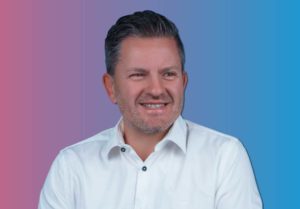Tony spoke to Tavio Roxo co-founder and CEO of OWLStm Software at AIE2022 about the latest developments in insurance technology.
Tony: Let us start with some feedback on the 2022 conference

Tavio: I am loving the conference; Thokozile and her team have made an amazing conference. One of the best ones that I have attended. She has brought the best speakers, we have had such engaging panel discussions across multiple themes, and it has been exceptionally well organized.
Tony: You spoke on a panel regarding the future of insurance. We have spoken about that many times, but it is an evolving topic. It is something that changes as we go, as we implement, and as the industry gets used to modern technologies. What were your main takeout from that panel?
Tavio: The main takeout is that the future of insurance, very much, hinges on technology.
All the discussions at the conference seem to taper towards a technology discussion. What you ultimately get out of it is that, as you move forward, you recognize that your technology must enable your business to be able to get closer to the customer and digitally service the customer. Unless you have that kind of view to the adoption of technology in a B2C environment, you are going to be caught wanting in years to come.
It is going to be increasingly difficult for you to, as an insurer or a UMA or as a broker, lean on and utilize technology later. You need to start the journey now by engaging with technology providers. You need to start engaging with technology resources within your organization, and you need to start mapping out a digital framework or technology framework, which you are going to adopt over the next few years. It must be intentional; it cannot be haphazard.
Tony: You spoke about three elements in this process of evolving your business and staying up to date. You spoke about the data, the technology stack and AI, can you tell us a bit about that?

OWLS™ Insurance Software
Proud providers to insurance companies, UMA’s,
administrators, intermediaries and financial services companies.
Tavio: In that journey, where do you start? I was trying to demonstrate my learnings with our various clients and us as an organization, building a technology stack and a technology environment and architecture, which is utilized by UMA’s and insurers. In the journey that we went on, it ultimately comes down to those three things.
Everyone is looking to implement technology, to optimize their business in the future, to digitally bring a customer in and service them. But you cannot start there. You must start somewhere. So where do you start?
You start with the data. You must get your data right. It is the fundamental building block of any technology adoption.
You must get the tech stack right. You must choose a technology that allows you to engage APIs (Application Programming Interfaces) and integrate with multiple data sources and databases, it must be completely cloud based. And only once you get those two, can you actually move on to automation or an AI environment where you can now start really utilizing what you have built to optimize and make your business more efficient and more cost effective.
Tony: OWLStm has a variety of different clients, and you speak to many potential clients. In the current environment, is the process evolving fast enough? Do you think people are focused enough on making that change in their business?
Tavio: There is a lot of friction and pain that comes with change. And because of that, people are reluctant to jump in with both feet. So, what I have seen, and a way to ease a company into a technology change or technology shift is to do it incrementally. The view is that people have been approaching technology in the past in a more binary way, where they want a big bang approach, saying “let me put all my business on a new technology stack.” That comes with a lot of risks and a lot of business pain.
So, to your listeners, an approach could be to incrementally adopt technologies for different lines or types of business within your organization over a period. To de-risk and to de-pain as it were, the pain of implementation and the pain of a technology change.
However, that must happen. It either happens now or it happens in 10 years’ time, reluctantly, because you are losing business and you are forced to. But it is going to happen one way or another.

